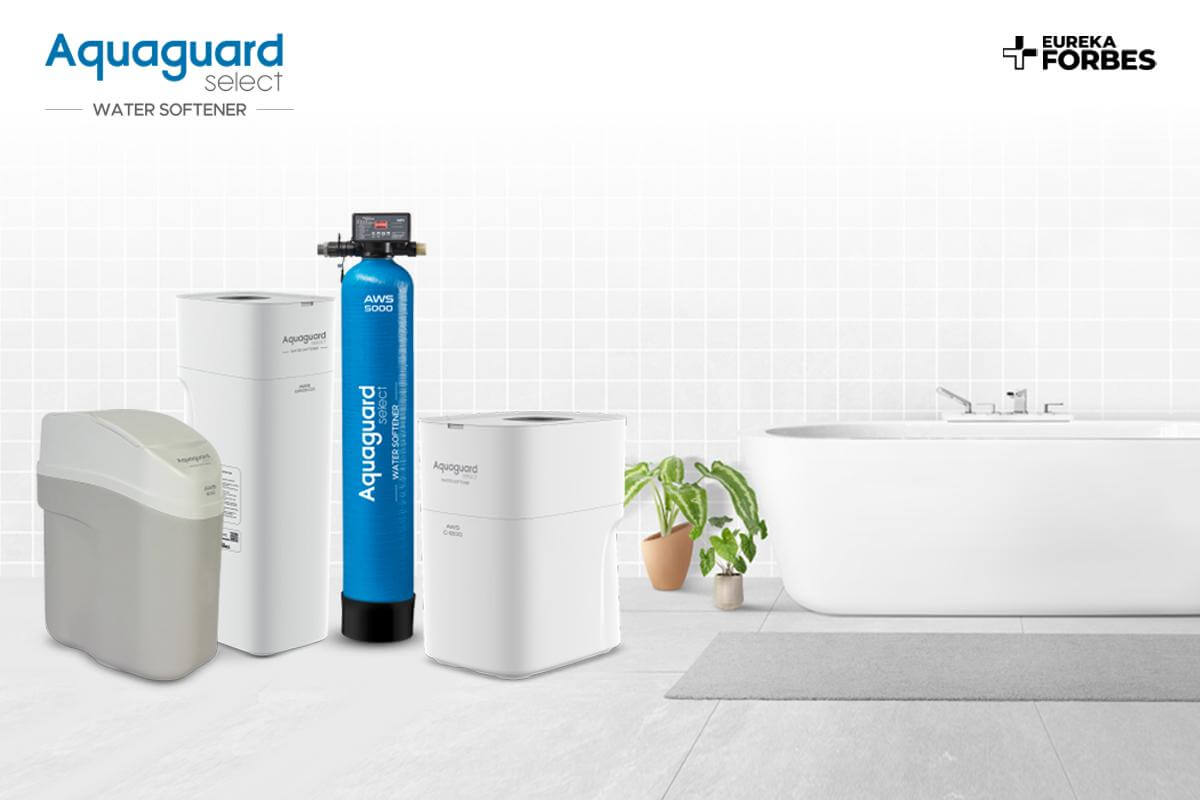Water softeners eliminate heavy minerals such as calcium, iron, and magnesium from your water source. The installation of a water softener can be a valuable addition to any household, and there are various options available, each serving specific purposes. This versatile product can enhance the overall water quality throughout your entire home, improving not only the taste and odor of the water but also ensuring that you can enjoy showers without the discomfort of dry skin, brittle hair, and the unpleasant residue often caused by soap and shampoo.
Aquaguard, a well-known brand in water purification, offers water softeners to combat this problem effectively. In this article, we will have a detailed look at how Aquaguard’s water softeners work. Before that, let’s understand the meaning of water softeners.
What are Water Softeners?
A water softener is a comprehensive home filtration system designed to combat the challenges posed by hard water. It achieves this through a process known as ion exchange. Hard water is a widespread and troublesome water issue, capable of wreaking havoc on various aspects of modern homes. It leads to detrimental effects on your skin like intense hair fall and rough skin, stains on bathroom fittings, corrosion on appliances, and discoloration of clothes.
If you reside in an area with hard water, it’s important to get a water softener from Aquaguard. It treats hard water by removing excess minerals and making it more suitable for domestic use.
How do Aquaguard’s Water Softeners Work?
Water softeners operate on the principle of ion exchange. They contain resin beads that attract and remove hardness minerals from the water. The process involves several key steps:
- Resin Beads: Inside the water softener tank, resin beads are charged with sodium ions. When hard water enters the tank, the resin beads attract and bind with the calcium and magnesium ions, replacing them with sodium ions.
- Regeneration: Over time, the resin beads become saturated with hardness minerals. To ensure the water softener continues to work efficiently, it goes through a regeneration cycle. During this process, a brine solution (a highly concentrated saltwater solution) is introduced into the tank. The resin beads release the captured minerals and reabsorb sodium ions from the brine solution.
- Flushing: The system flushes the now-softened water through your plumbing, leaving you with soft water to use in your home.
What are the Benefits of Using Aquaguard Water Softeners?
- Softer Skin and Hair, as there are no mineral deposits that can dry out your skin and hair.
- Increased Appliance Lifespan such as washing machines and dishwashers.
- Energy Savings as water heaters work more efficiently with soft water, reducing energy consumption.
- Cleaner Dishes and Fabrics as softened water prevents spots and mineral buildup on dishes, glassware, and fabrics.
Take Away
In conclusion, water softeners, such as those offered by Aquaguard, are invaluable for combating water hardness and its associated problems. These devices use ion exchange to remove calcium and magnesium ions from your water, replacing them with sodium ions. This process ensures your water is soft and free from the issues caused by hard water. Aquaguard's water softeners, known as some of the best water softeners, are designed to enhance your water quality, protecting you from the long-term effects of hard water.
- If you are looking for guest posts write for us lifestyle now.

